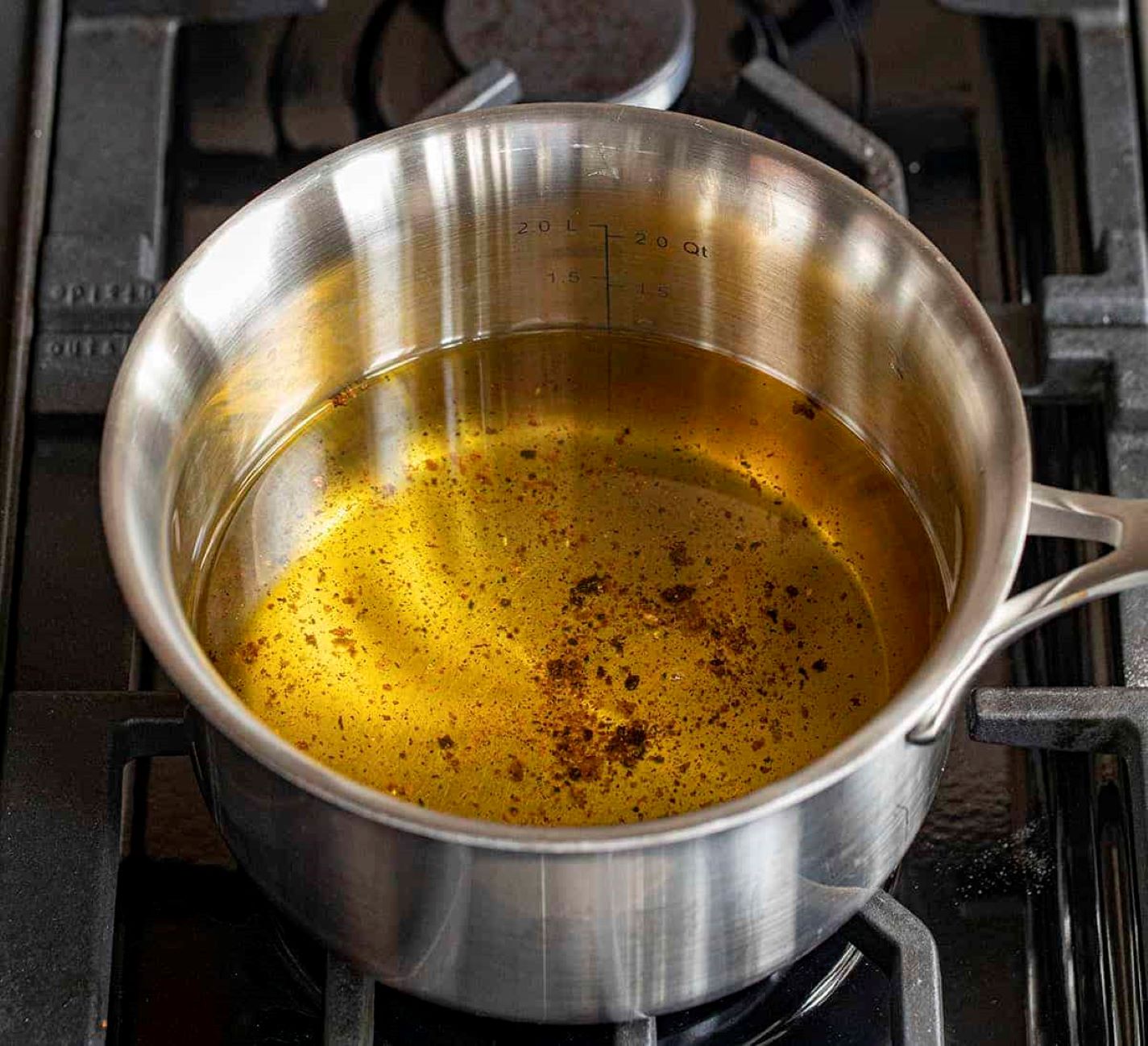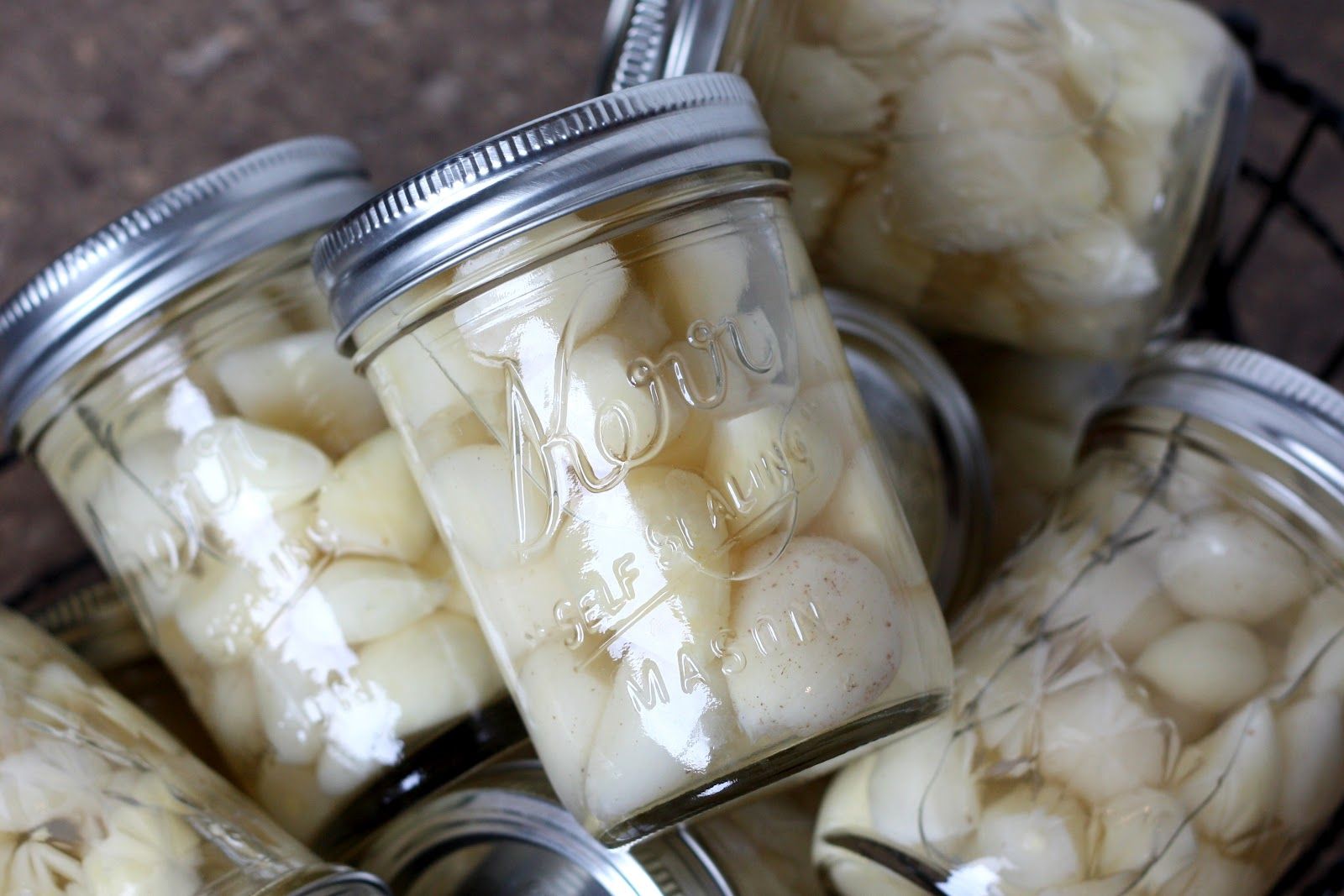

Articles
How To Store Grapeseed Oil
Modified: August 24, 2024
Learn the best methods for storing grapeseed oil to ensure its freshness and quality in this informative articles.
(Many of the links in this article redirect to a specific reviewed product. Your purchase of these products through affiliate links helps to generate commission for Storables.com, at no extra cost. Learn more)
Introduction
Grapeseed oil is a versatile and healthy cooking oil that is derived from the seeds of grapes. It is known for its light flavor, high smoke point, and numerous health benefits. Whether you’re a professional chef or a home cook, understanding how to properly store grapeseed oil is essential to maintain its freshness and quality.
In this article, we will explore various methods for storing grapeseed oil to ensure its longevity and preserve its nutritional value. From choosing the right container to storing it at different temperatures, we will cover everything you need to know to keep your grapeseed oil in optimal condition.
So, let’s dive in and learn how to store grapeseed oil effectively.
Key Takeaways:
- Properly storing grapeseed oil is crucial to maintain its flavor, freshness, and nutritional value. Choose dark glass containers, minimize air exposure, and consider room temperature, refrigerator, or freezer storage options.
- Grapeseed oil’s longevity and quality depend on proper handling and maintenance. Avoid light exposure, use clean utensils, and monitor for spoilage signs. Rotate your stock to ensure freshness and enjoy its culinary benefits.
Read more: How To Store Oil
Understanding Grapeseed Oil
Grapeseed oil is extracted from the seeds of grapes, primarily from wine grapes. It is a byproduct of winemaking and has gained popularity due to its light flavor, versatility, and various health benefits.
One of the key characteristics of grapeseed oil is its high smoke point, which makes it suitable for high-temperature cooking methods such as frying and sautéing. Its neutral taste also makes it a popular choice for salad dressings, marinades, and as a base for homemade mayonnaise.
Rich in polyunsaturated fats, grapeseed oil is also a good source of vitamin E, an antioxidant that helps protect the body against free radicals and supports skin health. Additionally, it contains omega-6 fatty acids, which contribute to heart health and inflammation reduction.
When it comes to storing grapeseed oil, it is important to understand its composition and properties. Grapeseed oil should be protected from light, heat, and air exposure, as these factors can lead to oxidation and rancidity.
Now that we have a better understanding of grapeseed oil, let’s explore the best practices for storing it to preserve its freshness and quality.
Choosing the Right Container
When it comes to storing grapeseed oil, choosing the right container is essential to maintain its flavor and quality. Here are some factors to consider:
1. Material: Opt for containers made of dark glass, such as amber or green glass. These colors help block out light and prevent oxidation, which can degrade the oil over time. Avoid storing grapeseed oil in clear or plastic containers, as they are more prone to light exposure.
2. Size: It is recommended to store grapeseed oil in smaller containers rather than large ones. Smaller containers reduce the amount of air inside, minimizing the risk of oxidation. If you purchase grapeseed oil in a large bottle, transfer it to smaller, airtight containers to keep it fresh for longer.
3. Airtight Seal: Ensure that the container has a tight-fitting lid or cap to prevent air from entering and causing oxidation. This will help maintain the quality and freshness of the grapeseed oil.
4. Temperature Resistance: Grapeseed oil is sensitive to temperature fluctuations, so choose a container that is heat resistant. This is particularly important if you plan to store the oil in the refrigerator or freezer, as some containers may not withstand extreme temperatures.
By selecting the right container, you can protect your grapeseed oil from light, air, and temperature changes, ensuring its longevity and preserving its flavor.
Storing Grapeseed Oil at Room Temperature
Storing grapeseed oil at room temperature is a common practice, especially if you use it frequently in your cooking. Follow these tips to ensure proper storage:
1. Choose a cool, dark location: Find a cupboard or pantry away from direct sunlight, heat sources, and moisture. Exposure to light and heat can accelerate the oxidation process and lead to the oil becoming rancid.
2. Keep the bottle tightly sealed: Make sure the container is properly sealed to prevent air from entering. Oxygen can cause the oil to spoil more quickly. If your grapeseed oil comes in a bottle with a screw-on lid, screw it tightly after each use.
3. Avoid transferring oil to decorative containers: While it may be tempting to transfer the oil to a beautiful container for display purposes, it’s best to leave it in its original packaging. This way, you can ensure the oil remains protected from light and air.
4. Monitor the expiration date: Check the expiration date on the bottle and use it as a guideline for how long the grapeseed oil will remain fresh. It’s generally recommended to use the oil within six to twelve months of opening, depending on the brand.
Remember, grapeseed oil stored at room temperature might start to lose its freshness and flavor after a certain period. Therefore, it’s advisable to consume it within the recommended time frame for the best culinary experience.
Now that you know how to store grapeseed oil at room temperature let’s explore another storage option – the refrigerator.
Store grapeseed oil in a cool, dark place away from direct sunlight and heat sources to prevent oxidation. Keep it tightly sealed to maintain freshness.
Storing Grapeseed Oil in the Refrigerator
If you live in a warm or humid climate, or if you don’t use grapeseed oil frequently, storing it in the refrigerator can help extend its shelf life and maintain its quality. Here’s how you can do it:
1. Choose a suitable container: As mentioned earlier, select a dark-colored glass container with a tight-sealing lid. This will help to block out light and minimize the exposure to air.
2. Transfer the oil to the container: If you purchased the grapeseed oil in a clear or plastic bottle, it’s best to transfer it to the chosen glass container. This will provide better protection against light and help maintain the oil’s freshness.
3. Find the ideal spot: Place the sealed container of grapeseed oil in the refrigerator. Choose a spot away from strong-smelling foods, as the oil can absorb odors.
4. Keep an eye on the temperature: Ensure that the refrigerator is set to a consistent temperature of around 40°F (4°C). Fluctuations in temperature can affect the quality of the oil.
5. Allow time for the oil to warm up: Before using the refrigerated grapeseed oil, take it out of the refrigerator and allow it to come to room temperature. This will help restore its fluidity and ensure easier pouring.
It’s important to note that refrigerating grapeseed oil may cause it to solidify or become cloudy. However, this is perfectly normal and does not indicate spoilage. Simply let the oil warm up to room temperature or gently warm it with your hands to return it to its liquid state.
Storing grapeseed oil in the refrigerator can help extend its shelf life and maintain its freshness, especially in warmer environments. However, if you use the oil frequently or if you live in a cooler climate, storing it at room temperature may be sufficient.
Now, let’s explore another storage option – the freezer.
Read more: How To Store Essential Oils
Storing Grapeseed Oil in the Freezer
If you have a large quantity of grapeseed oil that you want to store for an extended period, or if you simply prefer to keep it in the freezer, here are some steps to follow:
1. Choose a freezer-safe container: Opt for a container that is specifically designed for freezer storage. Look for a container made of BPA-free plastic or glass, with an airtight seal.
2. Transfer the oil to the container: If your grapeseed oil is already in a freezer-safe container, you can skip this step. Otherwise, transfer the oil from its original packaging to the chosen container.
3. Leave some headspace: When filling the container with grapeseed oil, leave some space at the top. This allows room for expansion as the oil freezes.
4. Seal the container tightly: Ensure that the container is tightly sealed to prevent the entry of air, which can cause freezer burn and affect the quality of the oil over time.
5. Label and date the container: Use a permanent marker to label the container with the date of storage. This will help you track the oil’s freshness and ensure you use it within a reasonable time frame.
6. Place the container in the freezer: Put the tightly sealed container of grapeseed oil in the freezer. Choose a spot where it will not be subject to temperature fluctuations or potential damage from other items.
7. Thaw the oil before use: When you’re ready to use the grapeseed oil, remove the container from the freezer and allow it to thaw in the refrigerator. Alternatively, you can immerse the container in a bowl of warm water to speed up the thawing process.
Storing grapeseed oil in the freezer can significantly extend its shelf life, allowing you to keep it on hand for a more extended period. However, keep in mind that freezing can slightly alter the texture and consistency of the oil. Therefore, it’s best to use it for cooking or baking rather than as a dressing or finishing oil.
Now that we’ve covered storing grapeseed oil in various ways, let’s move on to proper handling and maintenance.
Proper Handling and Maintenance
Proper handling and maintenance of grapeseed oil are crucial to ensure its longevity and to preserve its quality. Here are some essential tips to keep in mind:
1. Avoid exposing the oil to light: Light can accelerate the oxidation process and cause grapeseed oil to become rancid. Always store the oil in a dark container, and keep it in a dark cupboard or pantry away from direct sunlight.
2. Minimize air exposure: Oxygen can also lead to the oxidation of grapeseed oil. To minimize air exposure, ensure that the container is tightly sealed after each use. This will help preserve the freshness of the oil and extend its shelf life.
3. Use clean utensils: When accessing the oil, use clean and dry utensils to avoid introducing moisture or contaminants. Moisture can promote the growth of bacteria and affect the quality of the oil.
4. Avoid high-temperature cooking: While grapeseed oil has a high smoke point, it is still recommended to avoid prolonged exposure to high temperatures. Excessive heat can cause the oil to break down and lose its nutritional properties.
5. Check for signs of spoilage: Before using grapeseed oil, inspect it for any signs of spoilage, such as a rancid smell or an off taste. If the oil appears cloudy, thickened, or has an unpleasant odor, it’s best to discard it and replace it with fresh oil.
6. Rotate your stock: If you use grapeseed oil infrequently, it’s a good idea to rotate your stock. When you purchase a new bottle, use the older one first to ensure you are always using the freshest oil in your cooking.
By following these handling and maintenance tips, you can ensure that your grapeseed oil remains fresh, flavorful, and safe to use.
Now, let’s summarize what we’ve learned so far.
Conclusion
Properly storing grapeseed oil is essential to maintain its flavor, freshness, and nutritional value. By following the guidelines outlined in this article, you can ensure that your grapeseed oil stays in optimal condition for an extended period of time.
When it comes to choosing the right container, opt for dark glass containers with airtight seals to protect the oil from light and air exposure. Consider the size of the container and its temperature resistance to ensure optimal storage conditions.
Depending on your usage and preferences, you can store grapeseed oil at room temperature, in the refrigerator, or in the freezer. Each storage method has its advantages and considerations, so choose the option that suits your needs best.
Proper handling, such as minimizing light and air exposure, using clean utensils, and avoiding high temperatures, will help maintain the quality of the oil. Monitoring for signs of spoilage and rotating your stock regularly are also important practices to ensure you use fresh oil.
Remember, grapeseed oil has many culinary uses and health benefits, thanks to its high smoke point and nutritional profile. By storing it correctly, you can maximize its shelf life and enjoy its benefits for longer.
So, whether you’re using grapeseed oil for sautéing, salad dressings, or other culinary creations, be sure to store it properly and handle it with care.
Now that you have a comprehensive understanding of how to store grapeseed oil, you can confidently preserve its quality and make the most of this versatile cooking oil.
Frequently Asked Questions about How To Store Grapeseed Oil
Was this page helpful?
At Storables.com, we guarantee accurate and reliable information. Our content, validated by Expert Board Contributors, is crafted following stringent Editorial Policies. We're committed to providing you with well-researched, expert-backed insights for all your informational needs.















0 thoughts on “How To Store Grapeseed Oil”